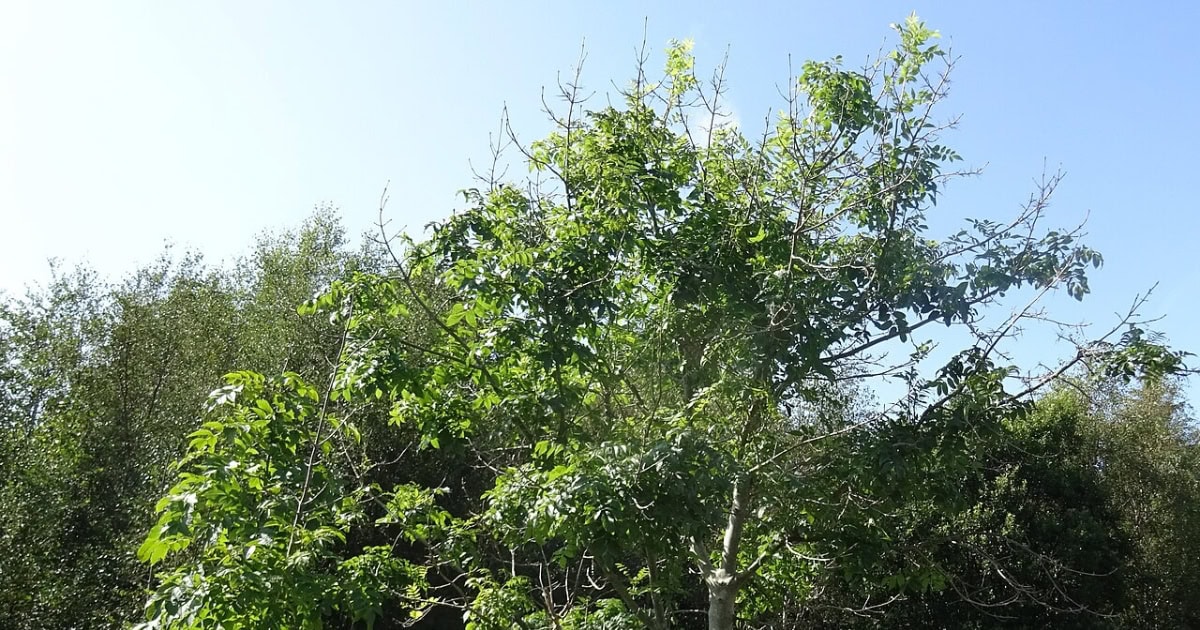Ash dieback: the journey here

Introduction
Ash dieback is a fungal disease of ash trees (Hymenoscyphus fraxineus). It arrived in Europe from East Asia through movement of plants, then spread on summer air currents. In the North West, wet summers and busy access tracks raise risk around roads, yards, and public rights of way. This article shows you the journey, the signs, the lookalikes, and the exact steps to protect people and places. Nature Forest Research
Definition: Ash dieback is a serious fungal disease of ash trees, caused by Hymenoscyphus fraxineus. Typical signs include blackening and wilting of leaves and shoots in mid to late summer, and dark, often diamond-shaped lesions on stems and branch junctions. The best time to confirm it is July to September, before normal autumn colour confuses the picture. Forest Research
From East Asia to Europe: how the pathogen crossed continents
This story begins a long way from a Lancashire farm track or a Merseyside verge. In its native East Asian range, the fungus lives largely as a quiet recycler on ash leaf litter. It is part of the background, not the villain.
Europe’s outbreak does not look like a slow, natural drift. Genetic work shows a striking founder effect: the European population was seeded by just two divergent haploid individuals—a tiny starting point for such a large invasion. That pattern strongly supports an introduction via plants for planting rather than through gradual, long-distance spore travel. Once established, the fungus spread quickly across mainland Europe, then into the United Kingdom. Official UK detection came in 2012, though the pathway likely pre-dated that date. Nature
From there, the engine of spread is simple and relentless. In summer, tiny cup-shaped fruiting bodies form on last year’s fallen ash leaf stalks. They release airborne spores that ride warm currents into the canopy, infecting fresh leaves and shoots. Year on year, infection cycles build and crowns thin. In areas with many ash trees, that cycle is hard to interrupt, which is why local management and owner action matter. CABI Digital Library
What does ash dieback look like?
Your first clue is usually in the leaves. In July and August, look for patches that darken and wilt along the leaflet, often near the midrib. Shoots can blacken and die back. Where a branch meets the stem, check for dark, sometimes diamond-shaped lesions that feel sunken under the bark. Peel back a flake and the inner tissue can show a brownish-grey discolouration. Over time, the crown thins. Stressed trees respond by pushing little tufts of new shoots from older wood lower down. It is a pattern, and once you have seen it, you rarely miss it again. Forest Research
Ash dieback symptoms through the seasons
- Spring: Buds may break as normal. A “late” ash in April is not proof of disease—the species often flushes late in the North West. Watch for poor bud-break on specific shoots rather than the whole tree.
- Mid–late summer (prime time): This is when you will confirm most cases. Blackened leaves and shoots, lesion collars at branch junctions, and early leaf drop along rides and edges where wind funnels through. Our wet summers around Preston, Chorley and Blackburn make leaf spotting more obvious on still, damp days. Forest Research
- Autumn: Normal colour change can disguise symptoms. Focus on the lesions and the distribution of dieback in the crown rather than colour alone. Forest Research
- Winter: Look up. Dead twigs in the upper crown and brittle laterals over tracks and yards tell you where the risk sits. Check stems on smaller trees for lesions that have girdled the circumference.
Ash dieback : a quick visual walk-through
When you walk a garden, a yard, or a woodland edge, carry this four-point picture list in your head:
- Leaves: blackened, wilting leaflets in July–September.
- Lesions: dark, often diamond-shaped collars at branch junctions.
- Crown: thinning above, with tufts of fresh shoots lower down.
- Litter: last year’s blackened leaf stalks; on damp days in late summer, tiny white cup-like fruiting bodies.
Forest Research’s symptom gallery and descriptions are worth bookmarking before you step out. Forest Research
Ash dieback lookalike risks to avoid
A few problems mimic parts of the picture. Drought scorch can brown leaf edges without the classic lesions. Honey fungus (Armillaria) is a secondary attacker that can speed decline in stressed trees but is not the original cause. Phytophthora on some broadleaves adds confusion with leaf browning and shoot dieback, though lesion shape and position differ. The fix is not guesswork; it is pattern recognition plus a qualified inspection near targets like roads, drives, gardens, and public rights of way. A single, careful note on ash dieback lookalike: if the lesions are missing, be cautious with your diagnosis. CABI Digital Library
Grounded vignette
Last August, after two days of rain, I pulled into a farm drive outside Ormskirk. The ash beside the access track was thin up top and busy with epicormic shoots lower down. Along the stem, three dark collars marked old branch junctions. On the verge, blackened leaf stalks were stitched into the gravel. We closed the gate, walked the line to the yard, and mapped a safe fell because brittle limbs were hanging over the delivery route. A week later, after a blustery night, there were fresh tear-outs where those collars had failed. That is why timing matters here.
North West owner checklist: what to do next
Steps (in order):
- Survey in summer. July to September is when the disease shows itself most clearly. Prioritise trees over roads, farm tracks, school routes, gardens, and public rights of way. Forest Research
- Plan access. Wet summers churn gateways and rides. Protect soils, agree traffic management with neighbours or the highways team if you need lane restrictions.
- Check permissions. Trees covered by a Tree Preservation Order or in a conservation area require consent for most works. A felling licence can apply outside gardens. Emergency safety exemptions are narrow: document the risk and speak to the authority first. Use national guidance to stay compliant. GOV.UK
- Decide: retain and monitor, or remove. Keep trees where structure is sound and targets are low. Remove where brittle limbs threaten highways, yards, or gardens. Keep good records—photos, dates, decisions.
- Hygiene and arisings. Clean saws and chippers. Avoid dragging infected brush through gateways. Stack arisings safely; follow local rules for moving timber and waste.
- Replant with diversity. Replace lost canopy with a mix that suits local soils and exposure. Think long term: species diversity reduces future risk.
Pros and cons
- Retain and monitor
Pros: Keeps canopy and habitat, allows naturally tolerant ash to seed the future.
Cons: Ongoing inspection costs; branches can still fail in storms if structure deteriorates. - Remove and replace
Pros: Immediate risk reduction over roads, paths, and play areas; clean management lines.
Cons: Up-front cost and loss of shade and habitat; careful timing around wildlife constraints.
The road ahead: resilience, resistant ash, and careful replanting
Not every tree is destined to fail. Even within this epidemic, a minority of ash shows partial resistance—and that matters. The same genetics paper that explains the tiny European founder base underlines why keeping safer, healthier ash in the landscape is sensible: today’s survivors carry the traits that help tomorrow’s woodlands. We need both caution and patience—retain where safe, remove where risk is high, and replant cleverly. Nature
Meanwhile, practical advice for owners continues to evolve, but the essentials hold: learn the signs, inspect in the right season, manage risk along roads and rights of way, and keep permissions straight. If you handle the basics well, you set your site up for the next twenty years rather than the next windy weekend. Authoritative owner guidance remains available from government and trusted charities—worth a read before you pick up the phone. GOV.UK The Tree Council
Frequently asked questions
How did ash dieback get here?
Genetic evidence points to introduction from East Asia through movement of plants, followed by wind-borne spread each summer from infected leaf litter. Nature
What does ash dieback look like in summer?
Blackened, wilting leaves and shoots in mid to late summer, plus dark, often diamond-shaped lesions where branches meet the stem. Forest Research
Is there a cure?
No cure. Management focuses on risk reduction, retaining safer trees, and replanting with diverse species suited to local conditions. GOV.UK
Should I cut down an infected ash?
Only where risk is high. Many trees can be retained with monitoring if their structure and surroundings allow. Get a qualified inspection.
Could it be something else?
Yes. Drought scorch and honey fungus can mimic parts of the picture. The classic combination—summer blackening and diamond lesions—is your key check. CABI Digital Library
Ready to act?
If you own ash beside a road, a public right of way, or a busy access track in the North West, book a summer tree health survey with Tree Surveys North West. We will confirm what you are seeing, map risk, and plan works legally and safely—without removing trees that can be retained.
Sources
- Forest Research: Ash dieback (Hymenoscyphus fraxineus)—symptoms and best survey timing. Forest Research
- GOV.UK: Managing ash dieback in England—owner responsibilities, permissions, and safety. GOV.UK
- McMullan et al. (2018), Nature Ecology & Evolution—the “two founder” genetic origin of Europe’s outbreak. Nature
- CABI Compendium: Hymenoscyphus fraxineus (ash dieback)—biology, dispersal, host range. CABI Digital Library
The Tree Council: Ash dieback disease—A guide for tree owners—practical owner guidance. The Tree Council
Book in your tree survey today
Get clear, professional advice from qualified tree surveyors you can trust. Whether you need a report for planning, insurance, mortgages or safety, we’ll deliver accurate results fast.


